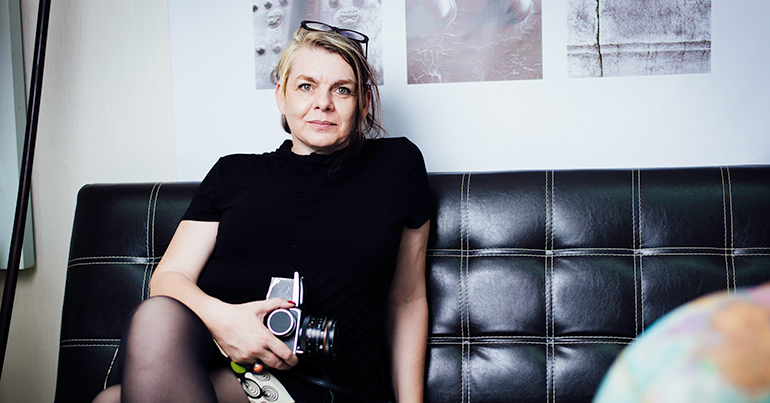Jo Farrell is preoccupied with feet. She describes herself as a cultural documentarian, and has been tracking down the last of China’s bound-feet women since 2005. She has published the second edition of her Living History: Bound Feet Women of China, and has a show of these photos at Ammo in Siem Reap through 18 December.
The first bound-foot woman Farrell located and photographed was Zhang Yun Ying, who was 79 in 2006 when they first met. She graces the cover of Farrell’s book.
“I was led to believe there were no women alive with bound feet until I met Zhang Yun Ying. Unfortunately, she just died at the end of August at 92,” said Farrell. “It’s been a long journey. I go back [to China] every year and try to meet with the same women, although a lot of them have passed away.”
Foot binding is thought to have begun in China in the 13th century. According to one origin story, an emperor was entranced by a petite woman he saw dancing on lily pads, and he decided she and her tiny feet were the most beautiful thing he had ever seen. So his courtesans adopted the practice of wrapping their feet to make them appear smaller. It began as a practice only among the elites, but then spread to the countryside, and by the 19th century, up to half of all Chinese women had bound feet. It continued even after being outlawed in 1911, then was forcibly banned in 1949.
The practice was necessary for any woman who wanted to be married. This aspect made Farrell think about beauty standards in all cultures.
“It made me realise how women in every culture alter themselves to be considered attractive or attainable in their own society,” she said. “These women saw all their friends and peers all with bound feet, and if they want to get married, the only way they’re going to be able to do that is if they also do it.”

Bound feet made it hard to walk, so it kept women of the upper classes homebound to cook, clean and raise children. When it spread to rural areas, bound-feet women who worked had to get around by walking on their heels.
The experience of having one’s feet bound, as Farrell describes in her book, was not for the squeamish.
“The small toes would be wrapped under the foot, leaving the big toe forward, and long cotton bindings, like bandages, were stretched round the heel of the foot,” she writes. “Over a period of time the small bones in the toes would break beneath their weight and the arch would lift so that the heel would almost touch the metatarsals, creating a cavern.”
It’s that “cavern” that led to a surprising aspect of the practice. Farrell explained that husbands would insert their penis in it to pleasure themselves.
Documenting this practice made Farrell keenly aware of the pressure on women in every culture to alter themselves in order to meet beauty standards. With the internet, these standards are constantly in flux, and both men and women are constantly judging and being judged.
“With the internet and access to images, we’re changing and we have more judgment about ourselves to find a partner, and it should be more about being loved for who we are,” she said. “As a woman looking at bound feet, my immediate reaction was how could you do this, and I’ve had a lot of people who are very judgmental and say, ‘That is horrible, how could you do it?’ But now I’m more understanding about why their mothers would make them go through this because they wanted their daughters to have the best lives, and this in their society is what they did, so I understand it completely.”
Farrell has received flack for her interest in bound feet, and said that has brought up issues of ethnocentrism, the tendency to look down on other cultures’ practices. She spoke of an anthropologist studying female genital mutilation in Africa who was quoted as saying that the practice had been perpetuated by women.
“There was a huge outcry – you cannot say that, this is all men, this is what men do,” she said. “Yet it’s the same with the bound feet: it’s the mothers and the grandmothers who are like, ‘For men to choose you, this is what you have to do.’ I think we have to embrace other cultures more than be judgmental. I’ve seen the social media [posts] about my work, with a lot of people, specifically Americans, who go, ‘Oh my god, this is horrible.’ You don’t understand the culture.”
For more information on the Living History: Bound Feet Women of China exhibition, check our the Facebook page here.


